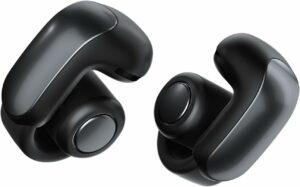Discreet artificial intelligence wearables put the spotlight on Halliday Smart Glasses

Discreet artificial intelligence wearables put the spotlight on Halliday Smart Glasses
At CES 2025, Halliday presented a product that has the potential to revolutionize the way we think about smart glasses. It is a frame that is simple and retro-inspired, and it is filled with artificial intelligence. However, it is also unobtrusive enough to fit in seamlessly with normal life. These glasses, in contrast to cumbersome augmented reality headsets, conceal a small display directly inside the frame, allowing you to conceal your technology while presenting information exactly where you want it.
An Unseen Display That Is Completely Unexpectedly Bright
The true star of the show is the DigiWindow, which is a micro-display that is almost undetectable to anybody else yet gives the impression of a sharp and brilliant 3.5-inch screen when seen from the background. It is still possible to read the projection even when it is outside in the bright sunshine. The fact that these glasses weigh just 35 grams, which is less than the weight of many premium sunglasses, makes them easy to wear for long periods of time.
AI that is proactive and does not wait to be asked questions
The smart glasses in question are not only passive displays; rather, they function as your personal assistant in an active manner. In addition to being able to interpret conversations in real time, they can also provide navigation with subtle cues, transcribe meetings, show live song lyrics, and even function as a teleprompter for presentations or video conferences.
The user interface may be operated using voice commands, light swipes on the temple, or an optional touchpad ring. This allows you to maintain control of the device without having to continuously reach for your phone.
A Method That Puts Style First
The design of Halliday is characterized by a strong emphasis on style, with finishes like as matte black and classic tortoiseshell. They take prescription lenses as well as ordinary lenses, making them suitable to a large clientele that is looking for technology that does not seem to be technology. On average, the battery life lasts between eight and twelve hours, which is sufficient for a full day of usage.
Initially, there was both excitement and genuine criticism.
Initial reactions have been favorable, particularly with regard to the novel invisibility display and the lightweight feel of the product. Unlike other augmented reality headsets, many people appreciated how easily it can be integrated into everyday life.
Nevertheless, early users also brought up certain difficulties. Some people have reported experiencing eye strain or dizziness as a result of concentrating on a single tiny display in one eye, which also required them to periodically shift their posture or gaze upward. Some people have voiced their worries with the need of expensive subscriptions in order to access all of the AI functions, which may be a source of frustration after purchasing premium gear.
According to reports, production has started in tiny quantities, and around 7,000 units are now being tested. This indicates that the company is taking a careful approach to quality and feedback before expanding production.
How Halliday Operates Within the Context of the Smart Glasses Landscape
Halliday places itself in the middle of the spectrum between ostentatious augmented reality headsets and straightforward audio wearables. Rather of overlaying holograms over your full field of vision, it discreetly positions useful information just above your normal line of sight. Being able to translate a conversation, check directions in a stealthy manner, or read notes without seeming to be wearing future goggles is a practical use of this technology.
The one-eye projection may, however, necessitate that people adjust their behavior. Because many of the AI functions are related to subscriptions, the cost might potentially pile up over the long run.
A few concluding thoughts: understated, astute, and promising
The Halliday Smart Glasses demonstrate that wearable technology does not have to be cumbersome or experimental; rather, it can be worn and fashionable. They are designed to be used in situations that occur in the real world, such as navigating congested streets, interpreting menus, or keeping your hands free while you are on the phone.
In the event that you are enthusiastic about cutting-edge wearables and are satisfied with being an early adopter, they provide something that is both novel and really helpful. But you should be aware that there is a possibility of experiencing some eye strain, and since the subscription model is used, your purchase is not the end of the expenditure.
In the end, Halliday’s idea seems to be less about replacing your phone and more about complementing it in the most understated and fashionable manner that is feasible.







